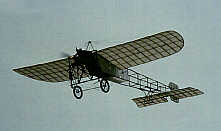
|
Bleriot XI, of the Amicale Jean Salis (lower picture provided by Jan Mattheus) |
Classics and antiques
If you entered this page directly and want to check out the rest of my website : click here to go to my Homepage. |
Last update : 22/07/00 - (c) Guido Van Roy